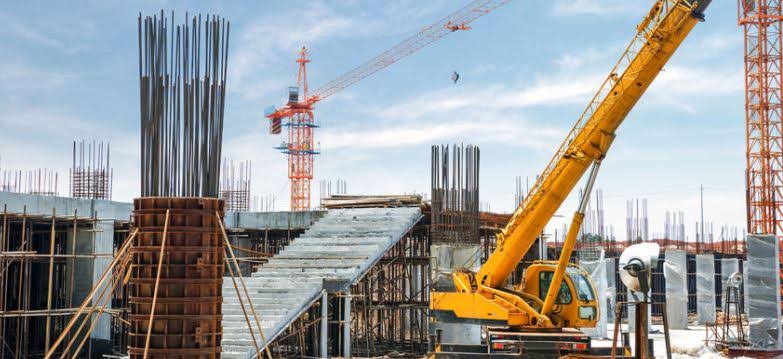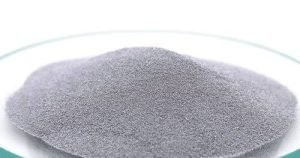Aluminum is a soft and malleable metal that has conquered the construction industry. Aluminum metal is popular in the construction of high-rise buildings and bridges. It is also majorly used for roofs, siding, translucent panes, window and door frames, staircases, air conditioning systems, solar protection, heating systems, furniture, etc. Below are the uses of aluminum mentioned in depth.
Uses of Aluminum in Construction
1. Architectural Structures:
Aluminum is widely used in constructing architectural structures such as doors, windows, and curtain walls due to its lightweight, durability, and corrosion resistance.
2. Roofing:
Aluminum roofing materials offer excellent weather resistance, making them suitable for both residential and commercial construction projects.
3. Cladding:
Aluminum cladding provides a protective layer for buildings, enhancing their aesthetic appeal while offering durability and easy maintenance.
4. Siding:
Aluminum siding is commonly used to cover the exterior walls of buildings, providing insulation and protecting against harsh weather conditions.
5. Gutters and Downspouts:
Aluminum gutters and downspouts effectively channel rainwater away from the building, preventing water damage and ensuring proper drainage.
6. Structural Components:
Aluminum is used in the construction of structural components, such as beams and columns, providing strength while minimizing weight.
7. Staircases and Handrails:
Aluminum staircases and handrails are lightweight, durable, and resistant to corrosion, making them ideal for both indoor and outdoor applications.
8. Skylights and Canopies:
Aluminum is often used in skylights and canopies due to its lightweight nature, allowing for larger installations without compromising structural integrity.
9. Suspended Ceilings:
Aluminum suspended ceilings offer versatility, easy installation, and the ability to integrate lighting fixtures and ventilation systems.
10. Facade Systems:
Aluminum facade systems are widely used in modern architecture, providing energy efficiency, weather resistance, and aesthetic appeal.
11. Aluminum Framing:
Aluminum framing systems are commonly used in construction, providing flexibility, strength, and ease of installation for walls, partitions, and other structures.
12. Interior Wall Panels:
Aluminum interior wall panels are lightweight, durable, and customizable, allowing for innovative design solutions in commercial and residential buildings.
13. Handicap Ramps and Rails:
Aluminum ramps and rails offer accessibility solutions for buildings, providing strength and durability while ensuring compliance with accessibility standards.
13. Handicap Ramps and Rails:
Aluminum ramps and rails offer accessibility solutions for buildings, providing strength and durability while ensuring compliance with accessibility standards.
14. Balcony Railings:
Aluminum railings are commonly used for balconies, offering a combination of safety, aesthetics, and low maintenance requirements.
15. HVAC Systems:
Aluminum is utilized in HVAC systems for its excellent heat transfer properties, contributing to efficient cooling and heating in buildings.
16. Partitions and Room Dividers:
Aluminum partitions and room dividers provide a versatile and lightweight solution for creating separate spaces within a building.
17. Solar Panel Frames:
Aluminum frames are commonly used in solar panel installations due to their lightweight nature, corrosion resistance, and compatibility with various mounting systems.
18. Floorings:
Aluminum floorings offer a durable and slip-resistant surface, making them suitable for areas with high foot traffic, such as commercial buildings and stadiums.
19. Awnings:
Aluminum awnings provide shade and protection from the elements, enhancing outdoor spaces in residential and commercial settings.
20. Signage and Display Systems:
Aluminum is widely used in signage and display systems due to its lightweight, versatility, and ability to withstand outdoor conditions.
21. Elevator Interiors:
Aluminum is utilized in elevator interiors for its sleek appearance, durability, and resistance to wear and tear.
22. Sports Stadium Structures:
Aluminum structures are commonly used in sports stadiums, providing a lightweight and versatile solution for seating areas and roof systems.
23. Bridge Construction:
Aluminum is utilized in the construction of bridges due to its high strength-to-weight ratio, corrosion resistance, and ability to withstand various weather conditions.
24. Exhibition Stands and Booths:
Aluminum frames and structures are frequently used in exhibition stands and booths, offering flexibility, ease of assembly, and visual appeal.
25. Sound Barrier Walls:
Aluminum sound barrier walls help reduce noise pollution near highways, airports, and other noisy environments, enhancing the quality of nearby residential and commercial areas.
26. Security Fencing:
Aluminum security fences provide a strong and durable perimeter protection solution for residential, commercial, and industrial properties.
27. Modular Building Systems:
Aluminum is used in modular building systems, allowing for efficient and cost-effective construction with quick assembly and disassembly capabilities.
28. Window Blinds and Shades:
Aluminum blinds and shades offer privacy, light control, and aesthetic appeal in residential and commercial buildings.
29. Temporary Shelters and Tents:
Aluminum frames are commonly used in temporary shelters and tents, providing a lightweight and portable solution for various outdoor events and emergency situations.
30. Audiovisual Structures:
Aluminum trusses and structures are often utilized in audiovisual setups, supporting lighting, sound, and display equipment in concerts, theaters, and event venues.
31. Mobile Homes and RVs:
Aluminum is used in the construction of mobile homes and RVs due to its lightweight nature, durability, and resistance to corrosion.
32. Public Transportation Systems:
Aluminum is utilized in public transportation systems, including buses, trams, and trains, for its lightweight properties, energy efficiency, and durability.
33. Canopies and Walkways:
Aluminum canopies and walkways provide shelter and enhance pedestrian circulation in public spaces, commercial complexes, and educational institutions.
34. Artistic Sculptures:
Aluminum is often chosen for artistic sculptures due to its malleability, allowing artists to create intricate and expressive designs.
35. Fire Escapes:
Aluminum fire escapes offer safe and reliable emergency exits in multi-story buildings, providing an alternative means of evacuation.
36. Greenhouse Structures:
Aluminum greenhouse structures offer a lightweight and durable framework for growing plants, providing an optimal environment for cultivation.
37. Stadium Seating:
Aluminum seating systems are commonly used in stadiums and arenas due to their strength, corrosion resistance, and ability to accommodate large crowds.
38. Water Treatment Systems:
Aluminum is utilized in water treatment systems, such as pipes and tanks, due to its corrosion resistance and ability to handle various water conditions.
39. Energy-efficient Windows:
Aluminum frames are used in energy-efficient windows, which incorporate thermal breaks and high-performance glazing to minimize heat transfer and improve insulation.
40. Exhibition Hall Structures:
Aluminum structures are commonly employed in exhibition halls, providing spacious and adaptable spaces for trade shows, conventions, and other large-scale events.
41. Marinas and Docks:
Aluminum is utilized in the construction of marinas and docks due to its corrosion resistance, durability, and ability to withstand marine environments.
42. Cooling Towers:
Aluminum is used in the construction of cooling towers due to its lightweight nature, thermal conductivity, and resistance to corrosion from cooling water.
43. Retaining Walls:
Aluminum retaining walls offer an alternative to traditional materials, providing stability and erosion control in landscaping and civil engineering projects.
44. Waste Management Systems:
Aluminum is used in waste management systems, including recycling bins and trash compactors, due to its durability, corrosion resistance, and recyclability.
45. Bus Shelters:
Aluminum bus shelters provide protection from the elements and comfortable waiting areas for public transportation users.
46. Transmission Towers:
Aluminum is used in the construction of transmission towers for power lines, offering high strength, light weight, and corrosion resistance.
47. Water Tanks:
Aluminum water tanks are commonly employed for storing and distributing water in residential, commercial, and industrial settings due to their corrosion resistance and durability.
48. Prefabricated Building Components:
Aluminum is used in the production of prefabricated building components, including walls, floors, and roof panels, offering quick and efficient construction options.
49. Sports Equipment:
Aluminum is utilized in the manufacturing of sports equipment, such as bleachers, goalposts, and athletic poles, for its strength, durability, and light weight.
50. Protective Bollards:
Aluminum bollards are commonly installed to protect buildings and pedestrians from vehicle impacts, offering a sturdy and visible barrier.
51. Façade Lighting Systems:
Aluminum is used in façade lighting systems, providing a lightweight and versatile framework for illuminating buildings and enhancing their visual appeal.
52. Agricultural Structures:
Aluminum is employed in agricultural structures, including barns and greenhouse frames, due to its resistance to corrosion and ability to withstand harsh weather conditions.
53. Data Center Enclosures:
Aluminum enclosures are used in data centers to protect critical equipment from electromagnetic interference (EMI) and provide thermal management solutions.
54. Retractable Roofs:
Aluminum frames are often employed in retractable roofs for stadiums and other venues, allowing for flexible use of the space and protection from the elements.
55. Observation Decks:
Aluminum is utilized in the construction of observation decks, providing lightweight and durable structures that offer panoramic views from elevated heights.
56. Hospital Structures:
Aluminum structures are commonly used in hospitals and healthcare facilities, offering flexibility, ease of construction, and resistance to corrosion and sterilization procedures.
57. Pedestrian Bridges:
Aluminum is employed in the construction of pedestrian bridges, providing lightweight and durable structures that facilitate safe passage over obstacles and roadways.
58. Industrial Catwalks:
Aluminum catwalks are frequently used in industrial settings, providing elevated platforms for safe access to equipment and maintenance areas.
59. Ventilation Systems:
Aluminum is utilized in ventilation systems, including air ducts and louvers, for its corrosion resistance, lightweight nature, and ease of installation.
60. Sunshades and Brise Soleil:
Aluminum sunshades and brise soleil systems provide shading solutions, reducing solar heat gain and enhancing energy efficiency in buildings.
61. Water Features:
Aluminum is often used in the construction of water features, such as fountains and water walls, offering a lightweight and corrosion-resistant framework.
62. Soundproofing Panels:
Aluminum soundproofing panels help reduce noise transmission in buildings, providing a quieter and more comfortable environment for occupants.
63. Crane Systems:
Aluminum is utilized in the construction of crane systems, offering high strength-to-weight ratio, corrosion resistance, and ease of assembly.
64. Security Doors and Gates:
Aluminum security doors and gates provide enhanced protection for residential, commercial, and industrial properties, combining strength and visual appeal.
65. Railway Structures:
Aluminum is used in the construction of railway structures, including platforms and station roofs, offering durability, corrosion resistance, and ease of maintenance.
66. Solar Panel Frames:
Aluminum frames are commonly used in solar panel installations due to their lightweight nature, corrosion resistance, and compatibility with various mounting systems.
67. Temporary Shelters and Tents:
Aluminum frames are commonly used in temporary shelters and tents, providing a lightweight and portable solution for various outdoor events and emergency situations.
68. Stadium Roofing:
Aluminum is utilized in stadium roofing systems, providing a lightweight and durable solution for covering large sports and entertainment venues.
69. Water Slides:
Aluminum is commonly used in the construction of water slides, offering strength, corrosion resistance, and a smooth surface for a thrilling and safe sliding experience.
70. Pedestal Systems:
Aluminum pedestal systems are used in raised flooring applications, providing stability, adjustability, and easy access to underlying services.
71. Outdoor Staircases:
Aluminum outdoor staircases provide safe and durable access to elevated areas, such as decks, terraces, and rooftops.
72. Animal Enclosures:
Aluminum is employed in the construction of animal enclosures, such as aviaries and zoo habitats, offering a lightweight and secure environment for animals.
73. Architectural Mesh:
Aluminum architectural mesh is used for decorative and functional purposes, providing visual interest, ventilation, and solar shading in building facades.
74. Seismic Retrofitting:
Aluminum is utilized in seismic retrofitting projects, strengthening buildings to withstand earthquakes and improve their structural integrity.
75. Sculptural Facades:
Aluminum facades are often used to create sculptural and visually striking building exteriors, allowing for intricate designs and unique aesthetic expressions.
76. Roof Walkways:
Aluminum roof walkways provide safe access for maintenance personnel, ensuring secure movement on roofs and preventing damage to roofing materials.
77. Climbing Walls:
Aluminum climbing walls offer recreational and fitness opportunities, providing a sturdy and adjustable surface for climbers of various skill levels.
78. Canopies for Building Entrances:
Aluminum canopies are commonly used to cover building entrances, providing shelter from the elements and enhancing the building’s visual appeal.
79. Reflective Roof Coatings:
Aluminum-based reflective roof coatings are applied to roofs to reduce heat absorption, improve energy efficiency, and prolong the lifespan of the roof.
80. Museum Displays:
Aluminum frames and structures are frequently used in museum displays, offering a versatile and lightweight solution for showcasing artifacts and exhibits.
81. Curtain Walls:
Aluminum curtain walls are commonly employed in commercial buildings, providing an aesthetically pleasing and energy-efficient envelope that maximizes natural light.
82. Rooftop Solar Mounting Systems:
Aluminum is used in rooftop solar mounting systems, providing a lightweight and durable framework for securing solar panels and optimizing their performance.
83. Exterior Siding:
Aluminum siding is a popular choice for residential and commercial buildings, offering durability, low maintenance, and a range of design options.
84. Skylights:
Aluminum frames and glazing systems are utilized in skylights, allowing natural light to enter buildings while maintaining thermal efficiency and weather resistance.
85. Structural Insulated Panels (SIPs):
Aluminum is used in structural insulated panels, providing strength, rigidity, and thermal performance for walls, floors, and roofs in energy-efficient buildings.
86. Bike Racks:
Aluminum bike racks are commonly installed in public spaces, providing secure and convenient parking solutions for cyclists.
87. Exterior Signage:
Aluminum is often used for exterior signage, offering durability, weather resistance, and the ability to create custom shapes and designs.
88. Balcony Railings:
Aluminum balcony railings provide safety and aesthetic appeal for elevated outdoor spaces, offering strength, durability, and low maintenance.
89. Stadium Seating Structures:
Aluminum structures are utilized in stadium seating systems, offering strength, corrosion resistance, and flexibility in accommodating different seating configurations.
90. Temporary Stage Platforms:
Aluminum stage platforms are commonly used for events and performances, providing a lightweight and sturdy surface for performers and equipment.
91. Exterior Louvers and Sunscreens:
Aluminum louvers and sunscreens are installed on building exteriors to control sunlight, reduce heat gain, and enhance energy efficiency.
92. Architectural Column Covers:
Aluminum column covers are utilized to enhance the appearance of structural columns, providing a sleek and durable cladding solution.
93. Water Sluice Gates:
Aluminum is used in water sluice gates, offering corrosion resistance and durability for controlling water flow in canals, dams, and water management systems.
94. Green Roofs:
Aluminum is employed in green roof systems, providing lightweight and durable edging and containment solutions for vegetation and growing media.
95. Airport Terminals:
Aluminum is widely used in the construction of airport terminals, offering durability, design flexibility, and resistance to corrosion in demanding environments.
96. Acoustic Wall Panels:
Aluminum-based acoustic wall panels are employed to improve sound absorption and reduce noise reverberation in indoor spaces.
97. Scaffolding Systems:
Aluminum scaffolding systems are lightweight, easily assembled, and corrosion-resistant, providing safe and efficient access for construction and maintenance tasks.
98. Interior Partitions:
Aluminum partitions are utilized to create flexible and aesthetically pleasing interior spaces in commercial buildings, offices, and other environments.
99. Drainage Systems:
Aluminum is used in drainage systems, including gutters and downspouts, offering corrosion resistance, durability, and efficient water management.
100. Waterproofing Membranes:
Aluminum-based waterproofing membranes are applied to roofs and other surfaces, providing a protective barrier against water infiltration and extending the lifespan of the underlying structure.




